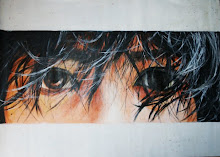Prehistoric and Primitive Art
We do not know how art began any more than we know how language started. If we take art to mean such activities as building temples and houses, make pictures and sculptures, or waving patterns, there is no people in the world without art. In the past the attitude to paintings and statues was often similar. The further we go back in history, the more definite and strange are the aims which art was supposed to serve. The same implies if we leave our civilized countries and travel to a place where people still resemble the conditions in which our remote ancestors lived. These people are often known as the ‘primitive’. Among the primitives, there is no difference between building and image-making as far as usefulness in concern. Their huts are there to shelter them from the forces of nature, whereas images are made to protect them against the spirits. Pictures and statues, in other words, are used to work magic. All these strange ideas are important. They may help us to understand the oldest paintings which have come down to us.
These paintings are as old as any trace of human skill (see image below). They were first discovered on the walls of caves and rocks in Spain and in southern France in the nineteenth century. At first, Archaeologist refused to believe that such vivid and lifelike representations of animals could have been made by men in the Ice Age. Yet they were gradually convinced when the implements of stone and bone were found in these regions. The pictures of bison, mammoth, or reindeer were painted or scratched on top of each other without any apparent order. These primitive hunters believe in the power of picture-making. They only made a picture of their prey and belabored it with their spears. These people believe that way would make the real animals surrender to their power.
 |
Bison, c. 15,000 - 10,000 BC Cave painting, Altamira, Spain |
 |
| Horse, c. 15,000 - 10,000 BC Cave painting, Lascaux, France |
Nowadays, there are still primitive peoples who use nothing but stone implements and who scratch pictures of animals on rock for magic purposes. There are other tribes who have regular festivals; dress up as animals and move like animals in solemn dances. They believe that somehow this will give them power over their prey. Sometimes they even believe that certain animals are related to them in some fairy-tale manner that the whole tribe is a wolf tribe, an eagle tribe or a raven tribe. Many tribes have special ceremonies in which they wear masks with features of these animals. Moreover, they seem to feel that they are transformed, that they have become ravens, or bears. Somehow it looks like they sometimes live in a kind of dream-world in which they can be man and animal at the same time. They have all learned their significance from former generations. They seem to have little chance of stepping outside their world to see their behavior critically.
All this may seem to have little to do with art. However, in fact these conditions influence art in many ways. Many of the artist’s works are meant to play a part in these strange rituals. What matters then is not whether the sculpture or painting is beautiful by our standrds, but whether it ‘works’, that is to say, whether it can perform the required magic. Moreover, the artists work for people of their own tribe who know exactly what each form or color is meant to signify. They are not expected to change these things, but only to apply all their skill and knowledge to the execution of their work.
Many remote tribes have develop a truly amazing skill in carving, basket work, leather or even in the working of metals. These works are made with simple tools. We can only marvel at the patience and sureness of touch in which these primitive people have done through centuries of specialization.
 |
| Ritual mask from the Papuan Gulf region, New Guinea, c. 1880 Wood, bark cloth and vegetable fiber. |
 |
| Lintel from a Maori chieftain's house, early 19th century Carved wood, 32 x 82 cm |
 |
| Inuit mask from Alaska, c. 1880 Painted wood, 37 x 25.5 cm |
 |
| Tlaloc, the Aztec rain-god, 14th - 15th century. Stone, height, 40 cm. A statue from Mexico. |
Under certain conditions, tribal artists can produce work which is just as correct in the representation of nature as the most skillful work by a Western master. A number of bronze heads were discovered a few decades ago in Nigeria. They seem to be many centuries old. There is no evidence that the native artists learned their skill from anyone outside.
 |
| Head of a Negro, representing a ruler (Oni), from Ife, Nigeria, 12th - 14th century. Bronze, height 16 cm |








































































